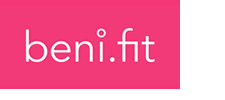Employee benefits are becoming increasingly more important as employees are placing a higher value on the benefits and wellness their company provides. To be specific:
- 80 of employees want benefits or perks more than they want a pay raise.
- 57 percent of people report benefits and perks being among their top considerations before considering a job.
- Happier employees are more engaged and more productive.
Benefits management is not just an annual event. It starts with knowing what’s important to your people and requires a strategy that aligns with these values as well as company goals.
Here is a leader’s guide to providing employee benefits that count.
Health, Dental, and Vision Insurance
According to a survey done by FRACTL, when asked how heavily employees would weigh certain benefits when deciding between a high-paying job and a lower-paying job with more benefits, health, dental and vision insurance ranked the highest. 88 percent of those surveyed said they would give this benefit some or heavy consideration.
Benefits are traditionally the second or third largest line item for a company, yet many CEOs and executives are not engaged in the long-term planning of these line items. Today’s employees are paying more for their healthcare. And, they expect, and deserve, an approach to benefits that meets their unique needs.
Health and Wellness
Employee burnout and stress is a serious problem. A study done by Kronos Incorporated and Future Workplace revealed that burnout is to blame for up to half of employee turnover. Banishing burnout, stress and anxiety starts with making employee health and wellness a priority.
“CEOs know that the most important source of company excellence is our people. It’s our responsibility as business leaders to invest in the health and wellbeing of our employees. Wellness programs are a great way to do that,” Brian Moynihan, the chairman and CEO of Bank of America says. “These are some of the reasons that Bank of America and many other companies have invested so heavily in programs to help employees better understand and take action to maintain their health. A successful approach starts with people taking the necessary steps to understand their own health.”
At Beni.fit, we believe in simple, time-effective ways to educate employees on their health and allow them to implement wellness practices into their everyday life. Several wellness programs we offer include:
The 60 Seconds to Health series provides motivating tips to use and apply immediately. Tips focus on actionable ways to improve overall well-being and be a savvy healthcare consumer.
Making wellness fun and accessible, our Rest, Fuel and Go 90-day program encourages healthy behaviors that help people thrive professionally and personally.
The data is in; meditation is life-changing. We make it easy to start and maintain a meditation practice with a short, daily guided meditation.
For a culture of productive, creative and resilient humans, implementing a strong health and wellness program is a must.
More Time Out Of The Office
A study done by Society for Human Resource Management (SHRM) for Project: Time Off, showed that according to HR managers, “employees who take most or all of their vacation time each year perform better, are more productive and more satisfied in their jobs than those who do not.”
“The majority of HR managers agree (77%) that employees who take most or all of their vacation time are more productive in their jobs than those who do not. Further, HR managers believe that taking using vacation time leads to higher performance (75%) and increased job satisfaction (78%).”
“Working in a creative agency is highly rewarding, but it also requires a lot of energy,” Ryan McGonagill, FRACTL Director of Operations, says. “We want people to manage their energy responsibly and take the time they need to recharge.”
Time out of the office is one of the most important benefits you can give employees. This benefit is very important to your employees. It is also necessary for optimal creativity, productivity and happiness in the workplace.
Student Loan and Tuition Assistance
With the high price ticket of higher education, student loan assistance is a benefit that is valuable to employees. With as much value as employees are putting on this benefit, only a shocking low percentage of companies (3 percent) offer it. However, 52 percent of companies are providing graduate educational assistance ($5,250 tax-free dollars per employee per year for tuition assistance).
For an employee with a base salary of 60,000, the estimated cost to provide $1,200 in loan assistance is $852, according to data gathered by FRACTL. This comes out to 0.01 percent of this employee’s salary. This benefit is a fairly “cheap” benefit, but a highly valuable one to employees.
Paid Parental Leave
Longer paid paternal leave is among the benefit trends to look for in 2017, with many companies expanding their leave policies. This study showed that 38 % of employees value paid parental leave as one of the five most important benefits. The traditional six-weeks of maternity leave is evolving into a more family-friendly benefit, with some companies offering leave as long as six months.
Expanding parental leave shows that an employer is hearing and adapting to the valued benefits of their employees. In addition, it shows an investment in employees outside of work, promoting loyalty to the company.
For an employee paid 60,000, offering 16-weeks of paid maternity leave costs an employer $1,200. This is only 0.02 percent of their salary. Another low-cost benefit that has high rewards.
Watch your people thrive and business performance skyrocket with this ultimate employee benefit checklist. Ready to reimagine benefits with us?


